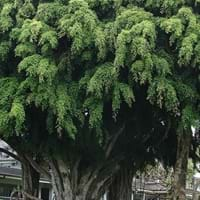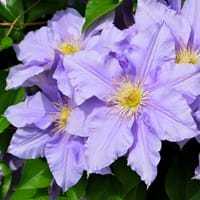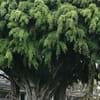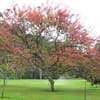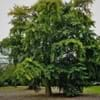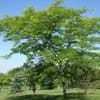Life Span
Perennial
Perennial
Origin
Southern Asia, Southeastern Asia, India, Melanesia, Australia
China, Japan
Types
Not available
'Alba Luxurians' clematis, Alpine clematis, 'Bee's Jubilee' clematis, 'Gillian Blades' clematis, 'Rhapsody' clematis
Number of Varieties
Not Available
Habitat
Temperate Regions, tropical environments, Tropical regions
Roadsides, Thickets
USDA Hardiness Zone
10-15
4-9
Sunset Zone
H1, H2, 13, 23, 24
A2, A3, 2a, 2b, 3a, 3b, 4, 5, 6, 7, 8, 9, 10, 11, 14, 15, 16, 17, 18, 19, 20, 21, 22, 23, 24
Habit
Thicket/Colonizing
Upright/Erect
Flower Color
Not Available
Blue, Pink, Red, White
Flower Color Modifier
Bicolor
Not Available
Fruit Color
Yellow, Red, Green, Pink, Orange Red, Black
Brown
Leaf Color in Spring
Dark Green
Light Green, Sea Green
Leaf Color in Summer
Dark Green
Green, Sea Green
Leaf Color in Fall
Dark Green
Green, Sea Green
Leaf Color in Winter
Dark Green
Not Available
Leaf Shape
Elliptic
Ovate
Plant Season
Spring, Summer, Fall, Winter
Spring, Summer
Sunlight
Full Sun, Partial Sun, Partial shade
Full Sun
Growth Rate
Very Fast
Medium
Type of Soil
Loam, Sand
Loamy, Well drained
The pH of Soil
Acidic, Neutral, Alkaline
Neutral, Slightly Alkaline
Soil Drainage
Well drained
Well drained
Bloom Time
Spring
Fall, Spring, Summer, Winter
Tolerances
Drought, Full Sun, Shade areas, Variety of soil types
Not Available
Where to Plant?
Ground
Ground
How to Plant?
Cuttings, Layering
Grafting, Seedlings
Plant Maintenance
Low
Medium
Watering Requirements
Water carefully
It cannot sustain wet-feet, Keep the ground moist but not water-logged, Requires regular watering, Water Deeply, Water twice a day in the initial period
In Summer
Lots of watering
Lots of watering
In Spring
Moderate
Moderate
In Winter
Average Water
Average Water
Soil pH
Acidic, Neutral, Alkaline
Neutral, Slightly Alkaline
Soil Type
Loam, Sand
Loamy, Well drained
Soil Drainage Capacity
Well drained
Well drained
Sun Exposure
Full Sun, Partial Sun, Partial shade
Full Sun
Pruning
Remove damaged leaves, Remove dead branches, Remove dead leaves
Cut or pinch the stems, Prune after flowering, Prune for shortening long shoots, Prune in spring, Prune to control growth, Remove dead or diseased plant parts, Remove shoots
Fertilizers
10-10-10, All-Purpose Liquid Fertilizer, Any balanced general purpose fertilizer, slow-release fertilizers
All-Purpose Liquid Fertilizer
Pests and Diseases
Red blotch, Soft scales
Aphids, Canker, Leaf spot, Powdery mildew, Rust, Whiteflies
Plant Tolerance
Drought, Full Sun, Shade areas, Variety of soil types
Drought
Flower Petal Number
Not Available
Single
Foliage Texture
Medium
Medium
Foliage Sheen
Glossy
Matte
Allergy
Rhinoconjunctivitis, wheezing
Colic, Diarrhea, Irritation to intestines, Irritation to stomach, Irritation to urinary tract
Aesthetic Uses
Bonsai, Cottage Garden
Showy Purposes, Used for decorating walls, fences, gates, hedges, etc.
Beauty Benefits
Reduce Bruises
Not Available
Environmental Uses
Air purification
Air purification
Medicinal Uses
Antibacterial, Aphrodisiac, Dysentry
Bone disorders, Gout, Headache, Joint pain, Syphilis, Varicose veins
Part of Plant Used
Bark, Fruits, Leaves, Root
Leaves, Root bark, Vines
Other Uses
Container
Employed in herbal medicine
Used As Indoor Plant
Yes
No
Used As Outdoor Plant
Yes
Yes
Garden Design
Container, Feature Plant, Hedges, Houseplant, Screening / Wind Break, Shade Trees, Topiary / Bonsai / Espalier, Tropical
Not Available
Botanical Name
FICUS benjamina
Clematis
Common Name
Weeping Fig, Benjamin's fig, Ficus tree
Clematis
In Hindi
रो अंजीर
क्लेमाटिस
In German
Birkenfeige
Klematis
In French
figuier pleureur
Clématite
In Spanish
higo llorón
Clemátide
In Greek
κλάμα σύκο
κληματιτής
In Portuguese
chorando fig
Clematite
In Polish
płacz rys
Clematis
In Latin
Plorans ficum
Clematis
Phylum
Magnoliophyta
Tracheophyta
Class
Magnoliopsida
Magnoliopsida
Order
Urticales
Ranunculales
Family
Moraceae
Ranunculaceae
Clade
Angiosperms, Eudicots, Rosids
Not Available
Subfamily
Not Available
Ranunculoideae
Importance of Weeping Fig and Clematis
Want to have the most appropriate plant for your garden? You might want to know the importance of Weeping Fig and Clematis. Basically, these two plants vary in many aspects. Compare Weeping Fig and Clematis as they differ in many characteristics such as their life, care, benefits, facts, etc. Every gardener must at least have the slightest clue about the plants he wants to plant in his garden. Compare their benefits, which differ in many ways like facts and uses. The medicinal use of Weeping Fig is Antibacterial, Aphrodisiac and Dysentry whereas of Clematis is Bone disorders, Gout, Headache, Joint pain, Syphilis and Varicose veins. Weeping Fig has beauty benefits as follows: Reduce Bruises while Clematis has beauty benefits as follows: Reduce Bruises.
Compare Facts of Weeping Fig vs Clematis
How to choose the best garden plant for your garden depending upon its facts? Here garden plant comparison will help you to solve this query. Compare the facts of Weeping Fig vs Clematis and know which one to choose. As garden plants have benefits and other uses, allergy is also a major drawback of plants for some people. Allergic reactions of Weeping Fig are Rhinoconjunctivitis and wheezing whereas of Clematis have Colic, Diarrhea, Irritation to intestines, Irritation to stomach and Irritation to urinary tract respectively. Having a fruit bearing plant in your garden can be a plus point of your garden. Weeping Fig has no showy fruits and Clematis has showy fruits. Also Weeping Fig is not flowering and Clematis is not flowering . You can compare Weeping Fig and Clematis facts and facts of other plants too.
